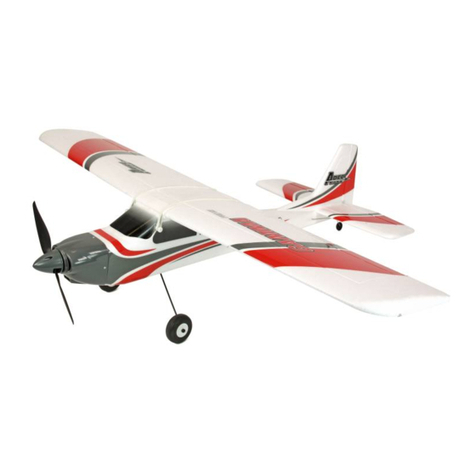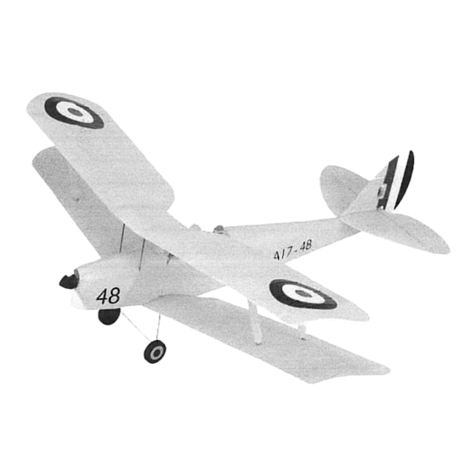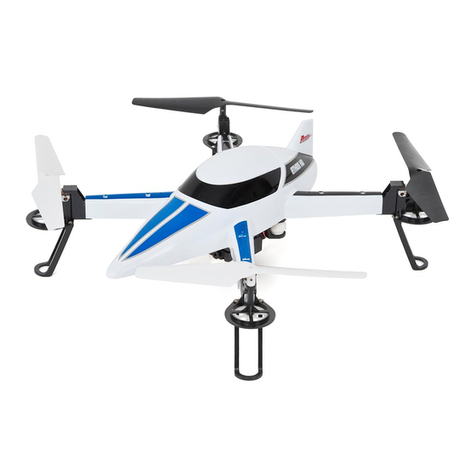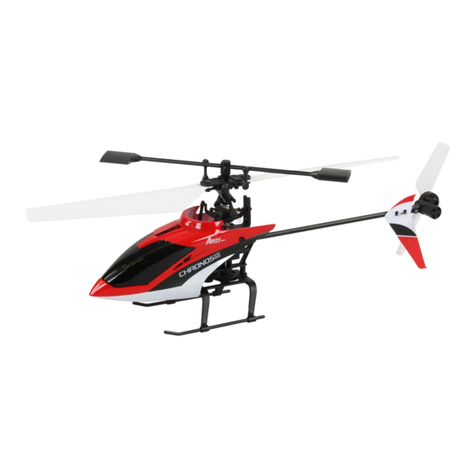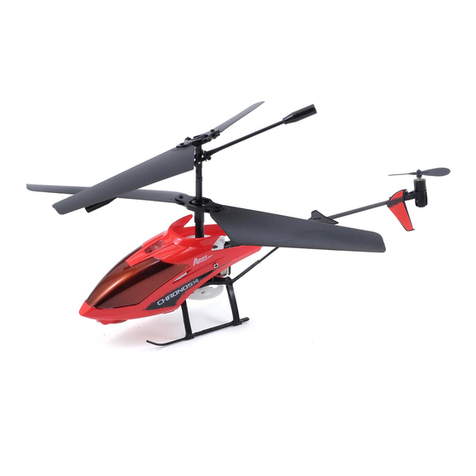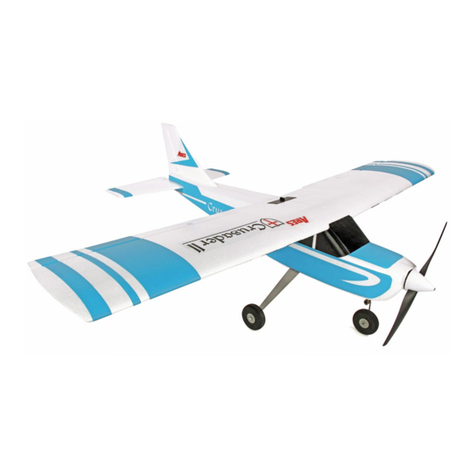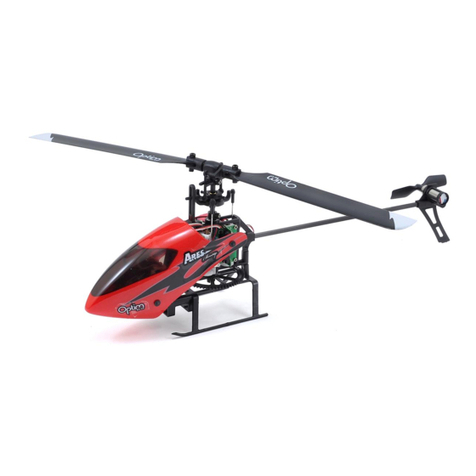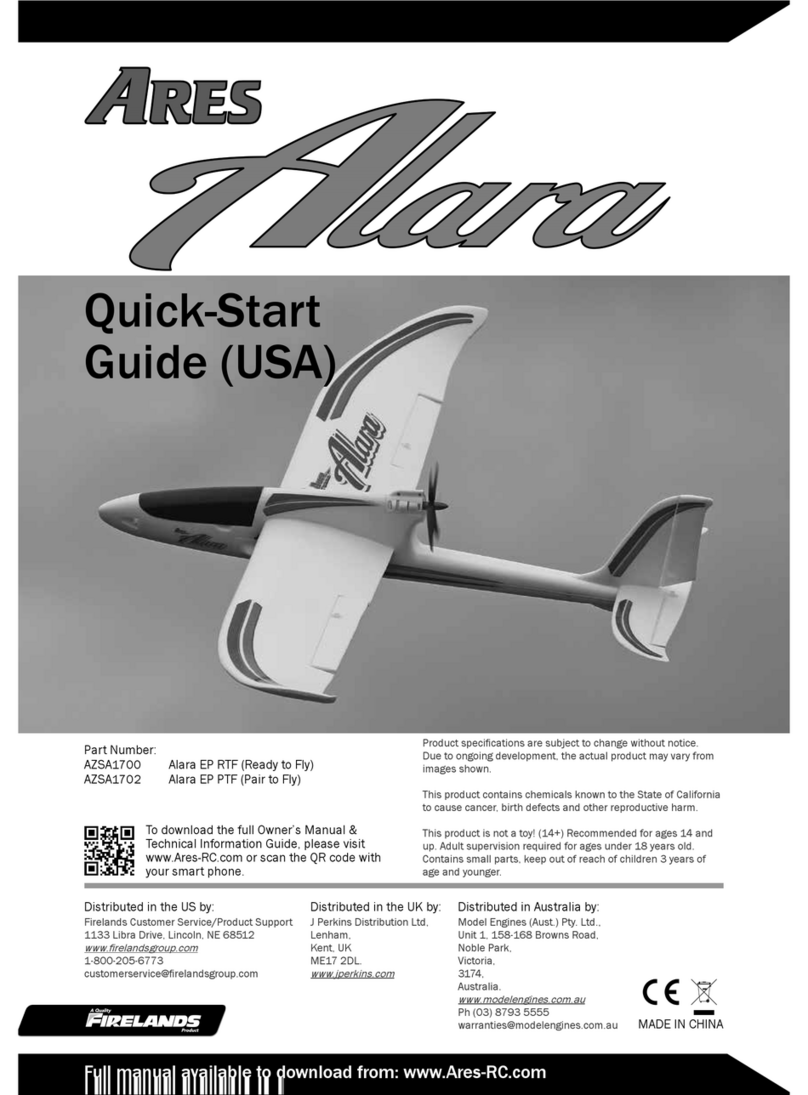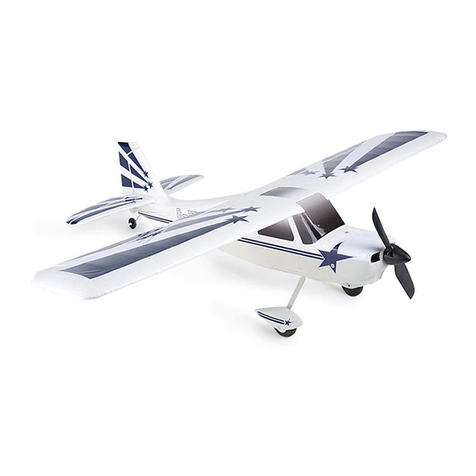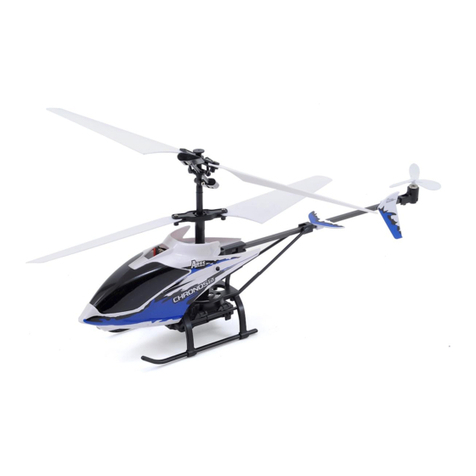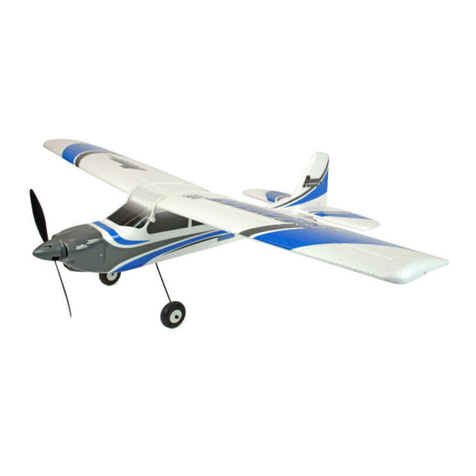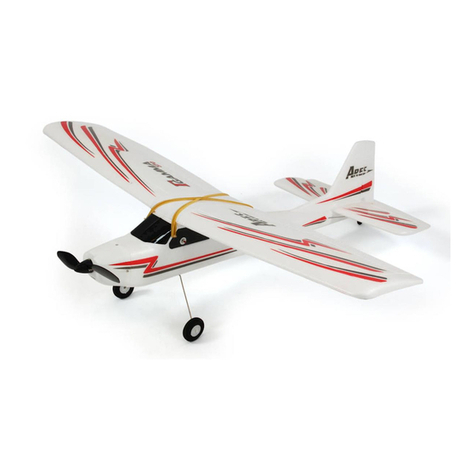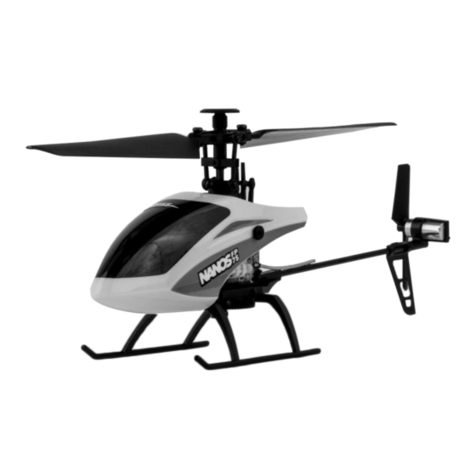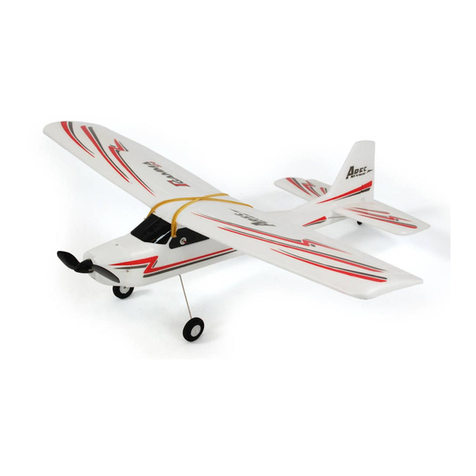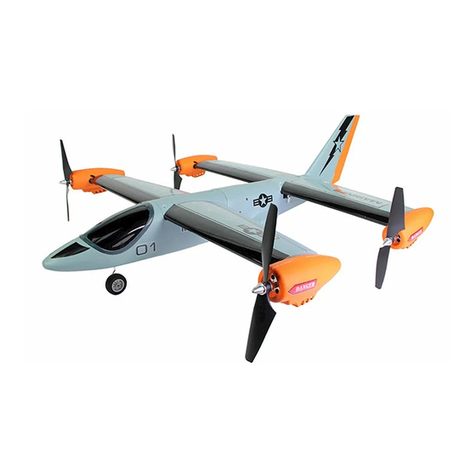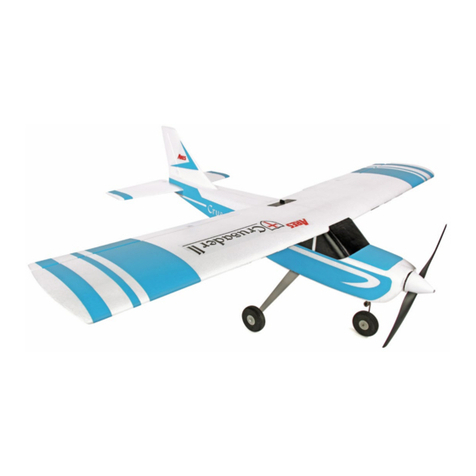6
• Keep all chemicals, small parts and all electronic components out of the
reach of children.
• Moisture causes damage to electronic components. Avoid water exposure
to all electronic components, parts, etc. that are not specically designed
and protected for use in water.
• Never lick or place any portion of your model in your mouth as it could
cause serious injury.
LiPo Battery Warning
IMPORTANT NOTE: Lithium Polymer batteries are signicantly more volatile
than the alkaline, NiCd or NiMH batteries also used in RC applications.
All instructions and warnings must be followed exactly to prevent property
damage and / or personal injury as the mishandling of LiPo batteries can
result in re. By handling, charging or using the included LiPo battery you
assume all risks associated with LiPo batteries. If you do not agree with these
conditions please return the complete product in new, unused condition to
the place of purchase immediately.
• You MUST charge the LiPo battery in a safe area away from ammable
materials.
• NEVER, at any time, leave the LiPo battery unattended when it’s being
charged.
• When charging the battery you should ALWAYS remain in constant
observation to monitor the charging process and react immediately to
any potential problems that may occur.
• After ying / discharging the battery you must allow it to cool to ambient/
room temperature before recharging.
• To charge the LiPo battery you MUST use only the included charger in the
transmitter. Failure to do so may result in a re causing property damage
and/or personal injury. DO NOT use a NiCd or NiMH charger.
If at any time during the charge or discharge process the battery begins to
balloon or swell, discontinue charging or discharging immediately. Quickly
and safely disconnect the battery, then place it in a safe, open area away
from ammable materials to observe for at least 15 minutes. Continuing to
charge or discharge a battery that has begun to balloon or swell can result in
a re. A battery that has ballooned or swollen, even a small amount, must be
removed from service completely.
For best results, store the battery at room temperature – approximately
68 – 77°Fahrenheit (F) – and in a dry area.
•
